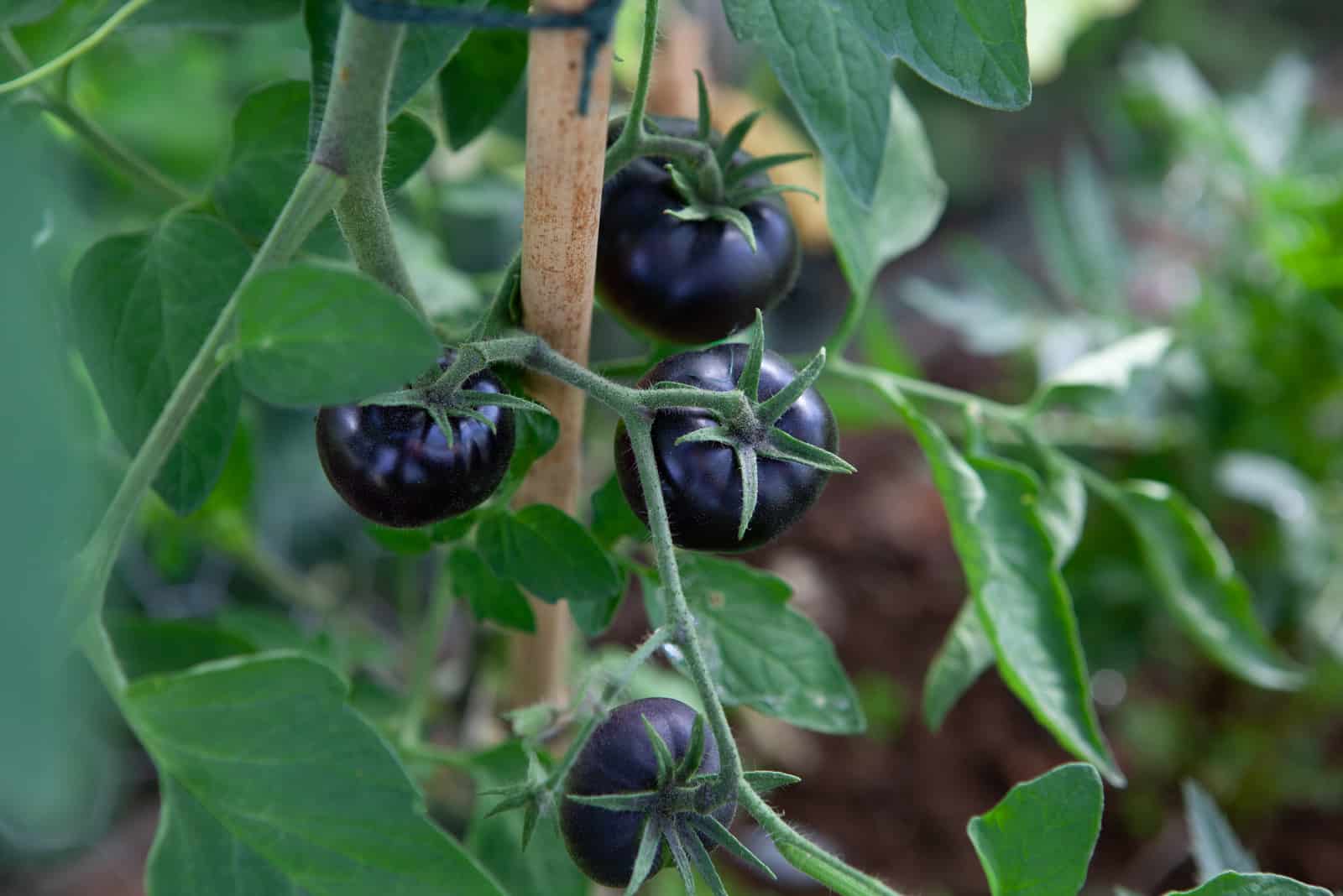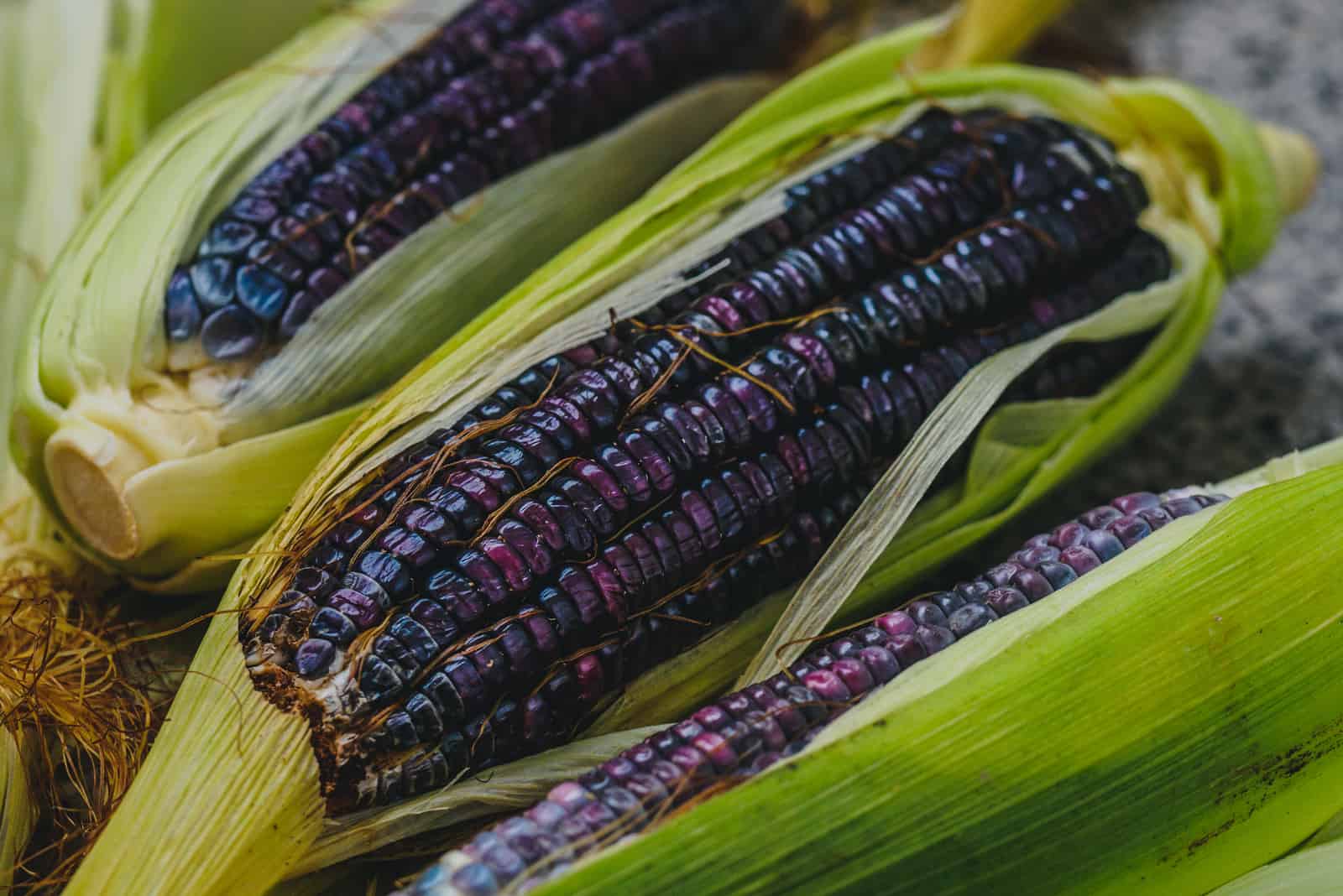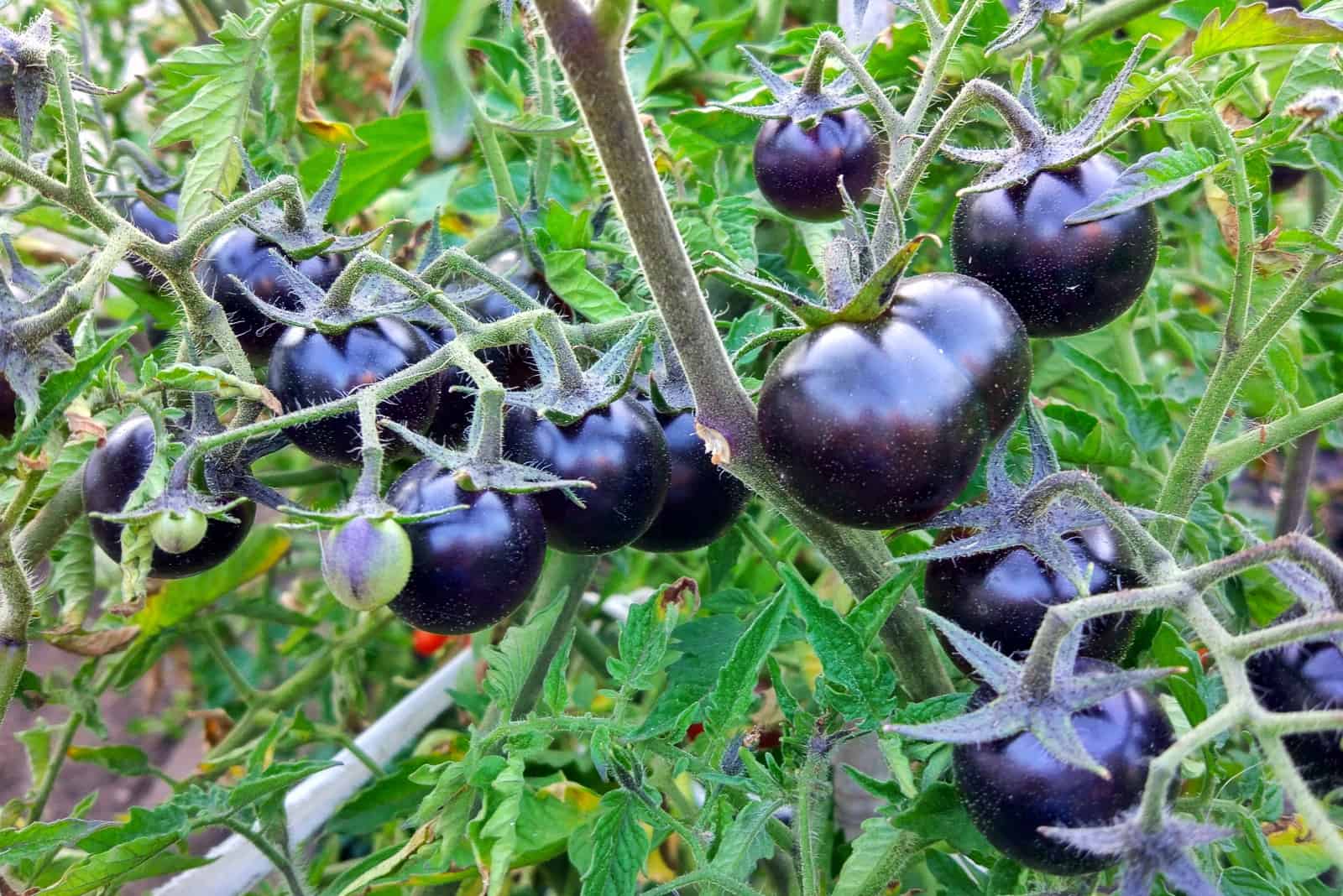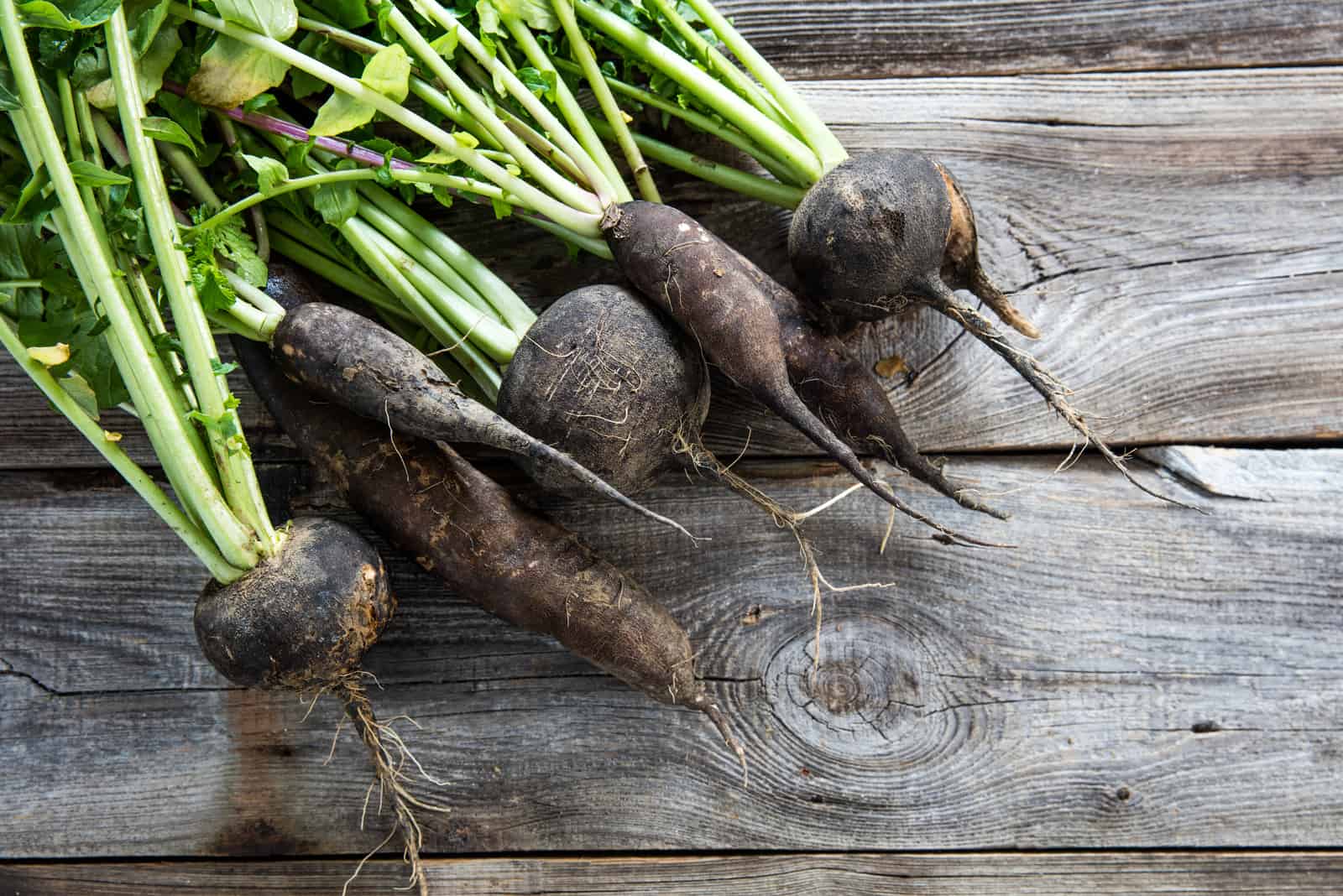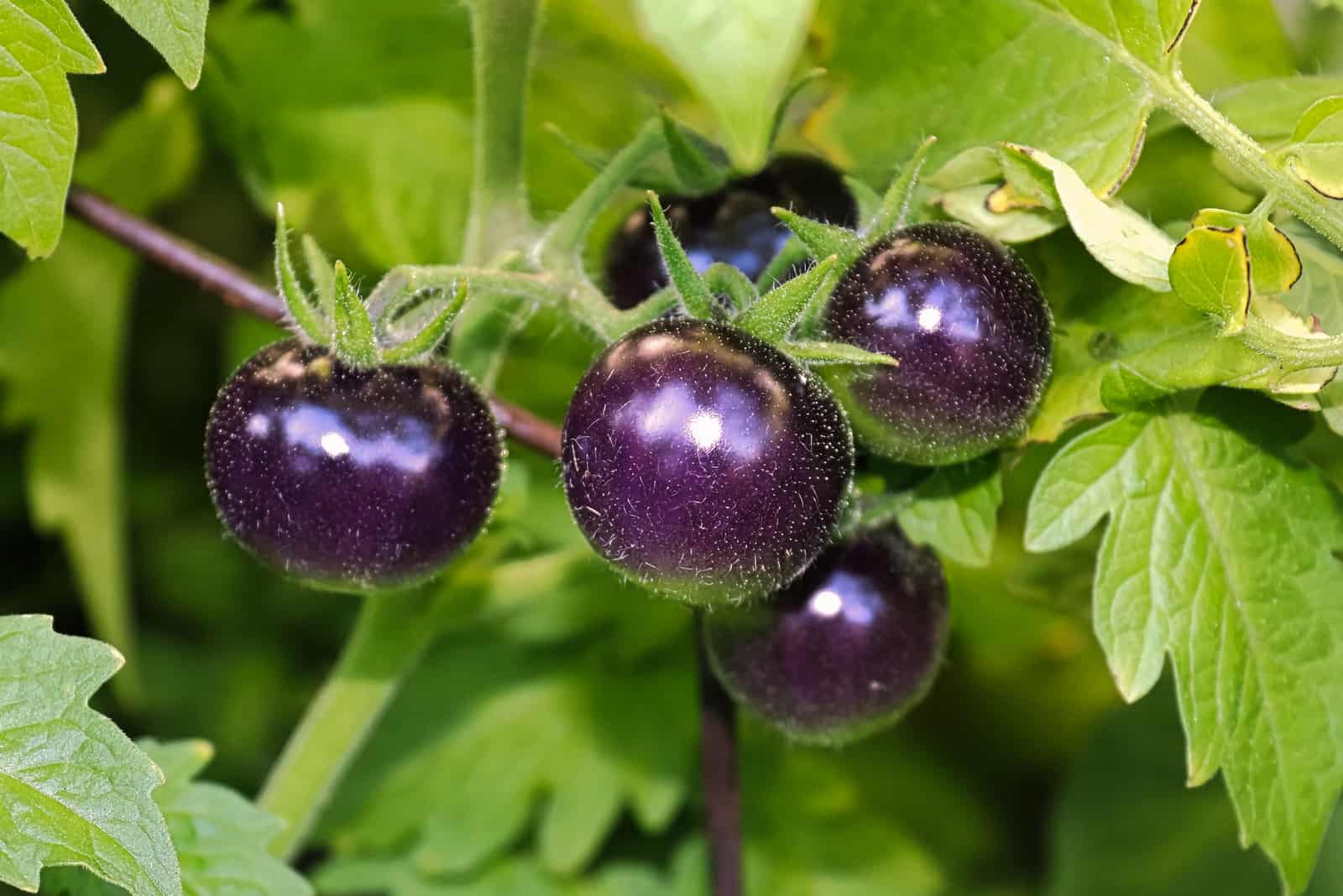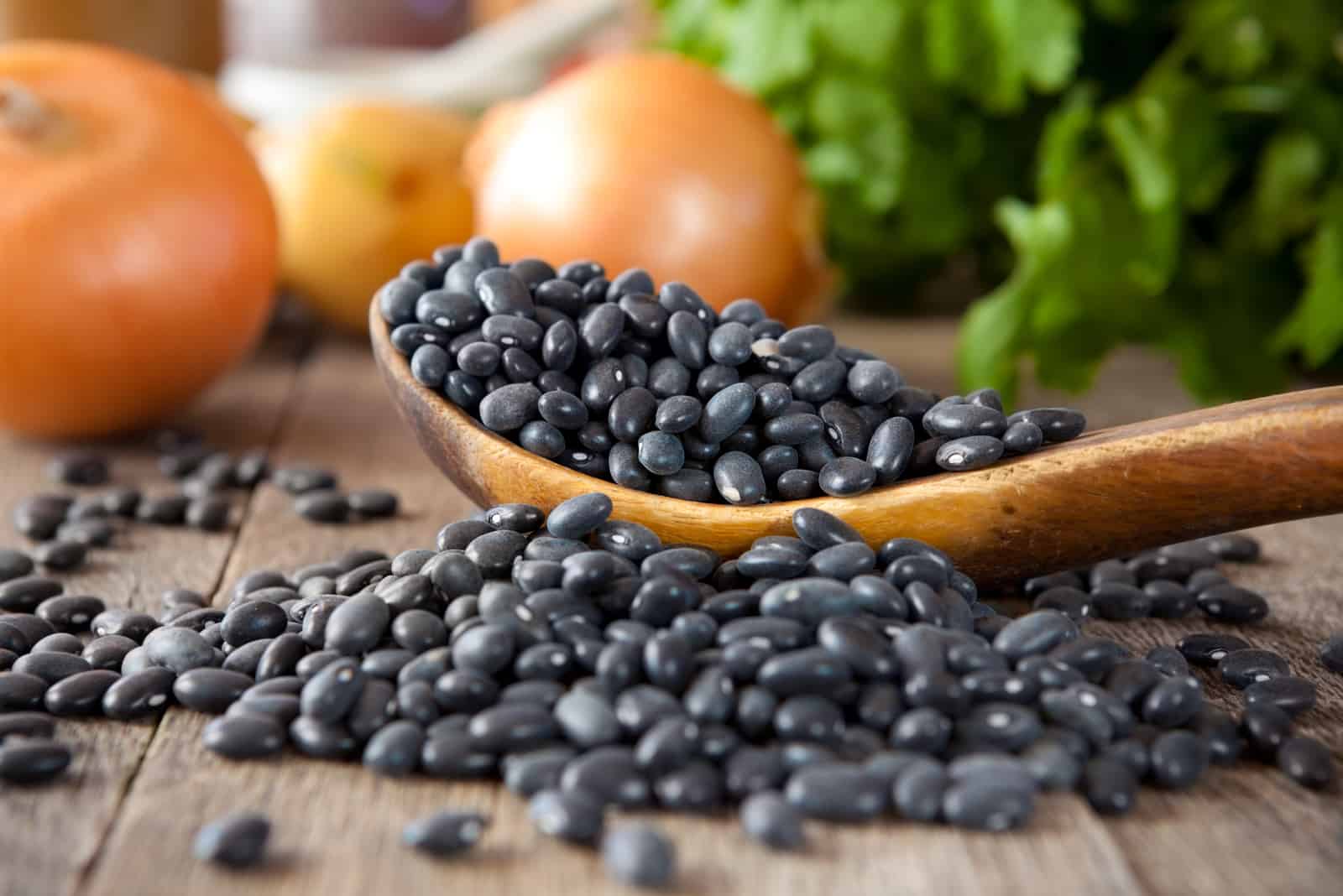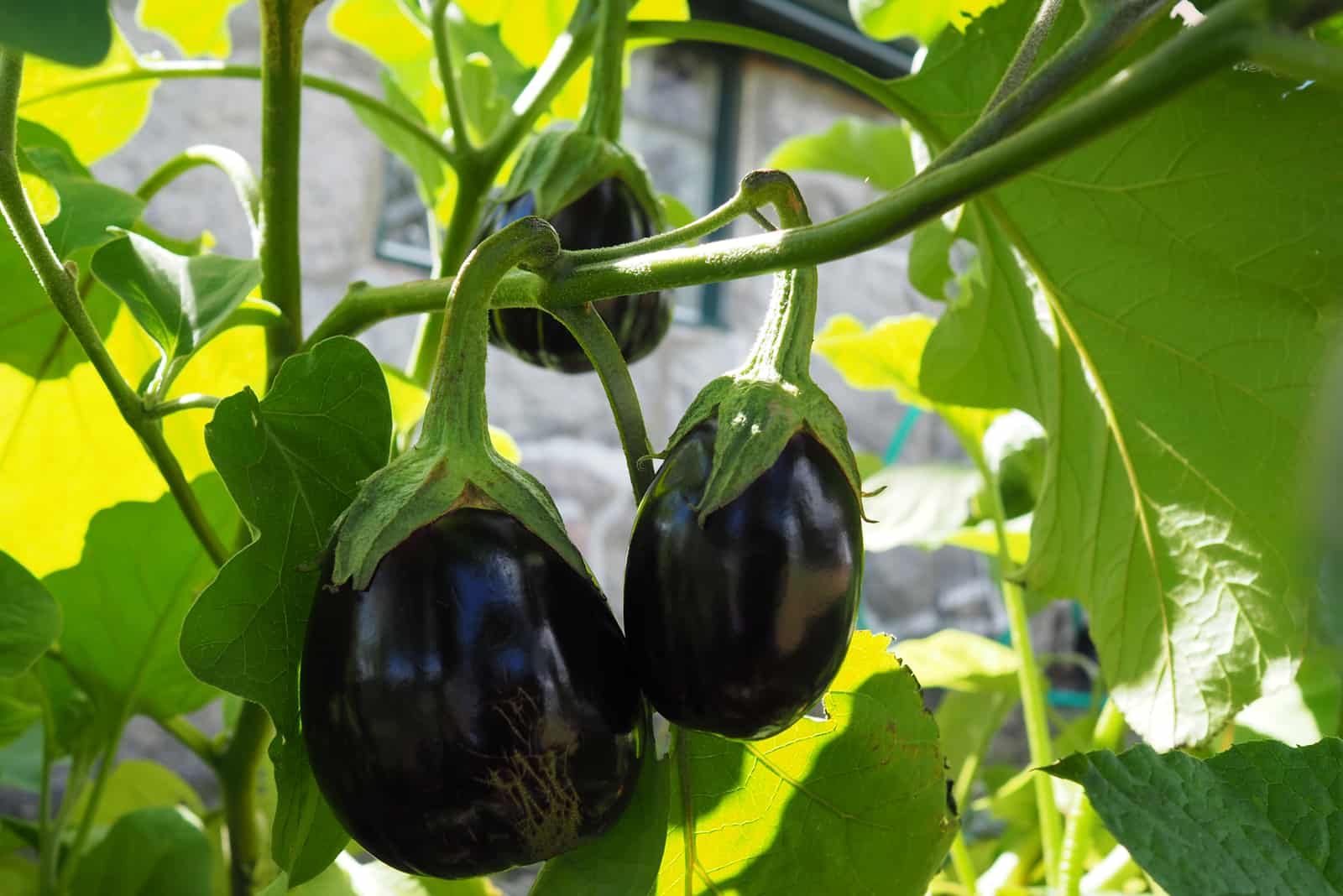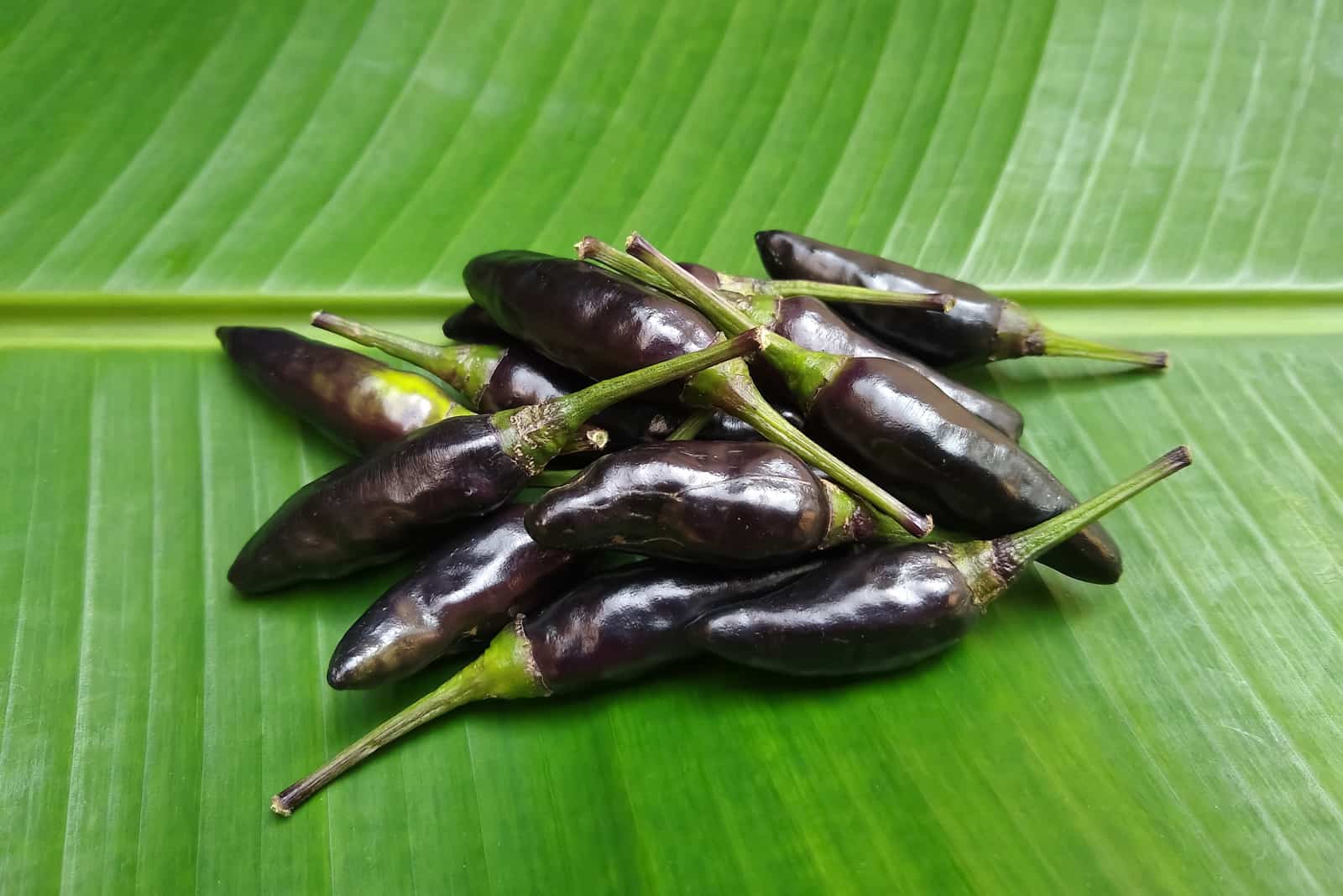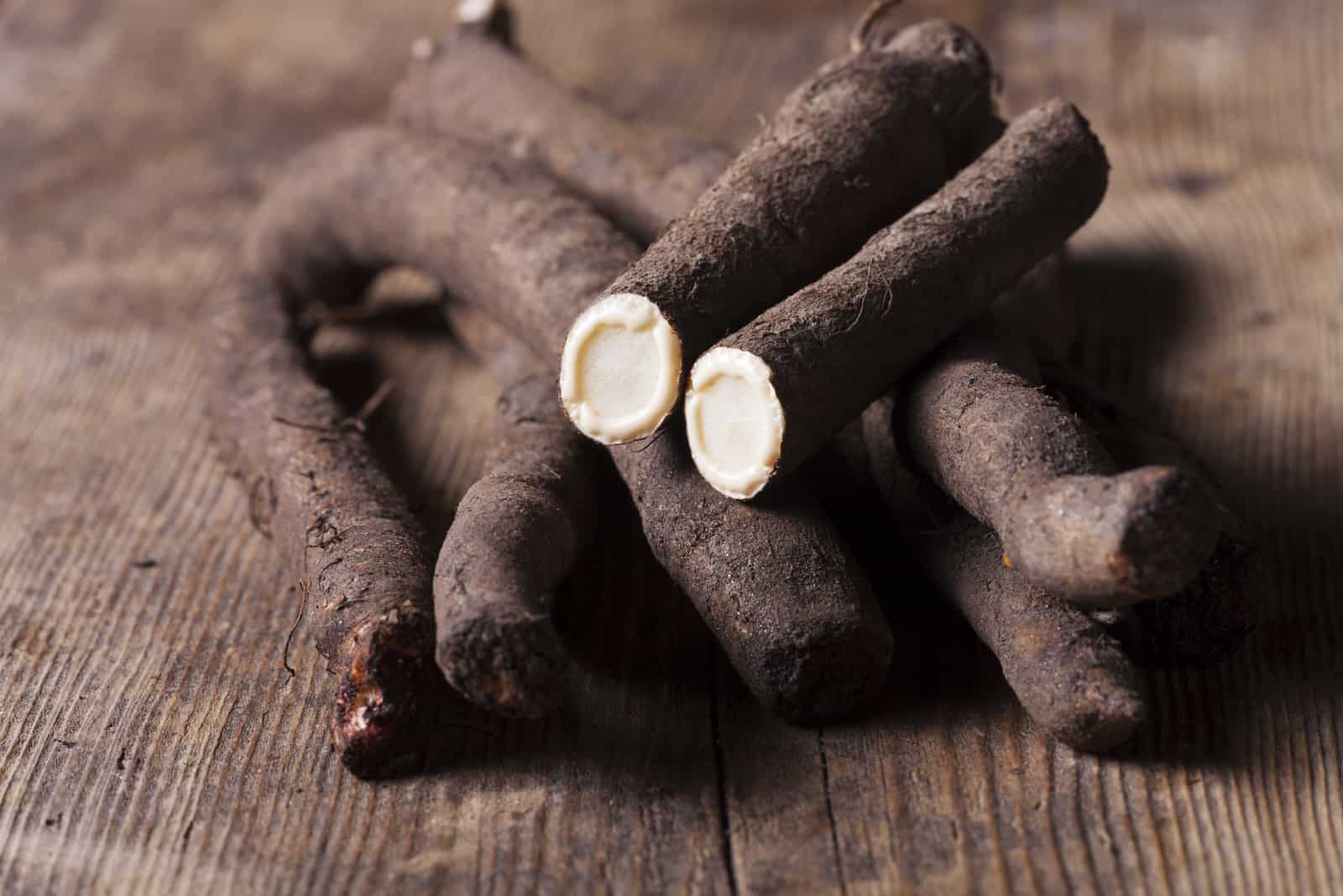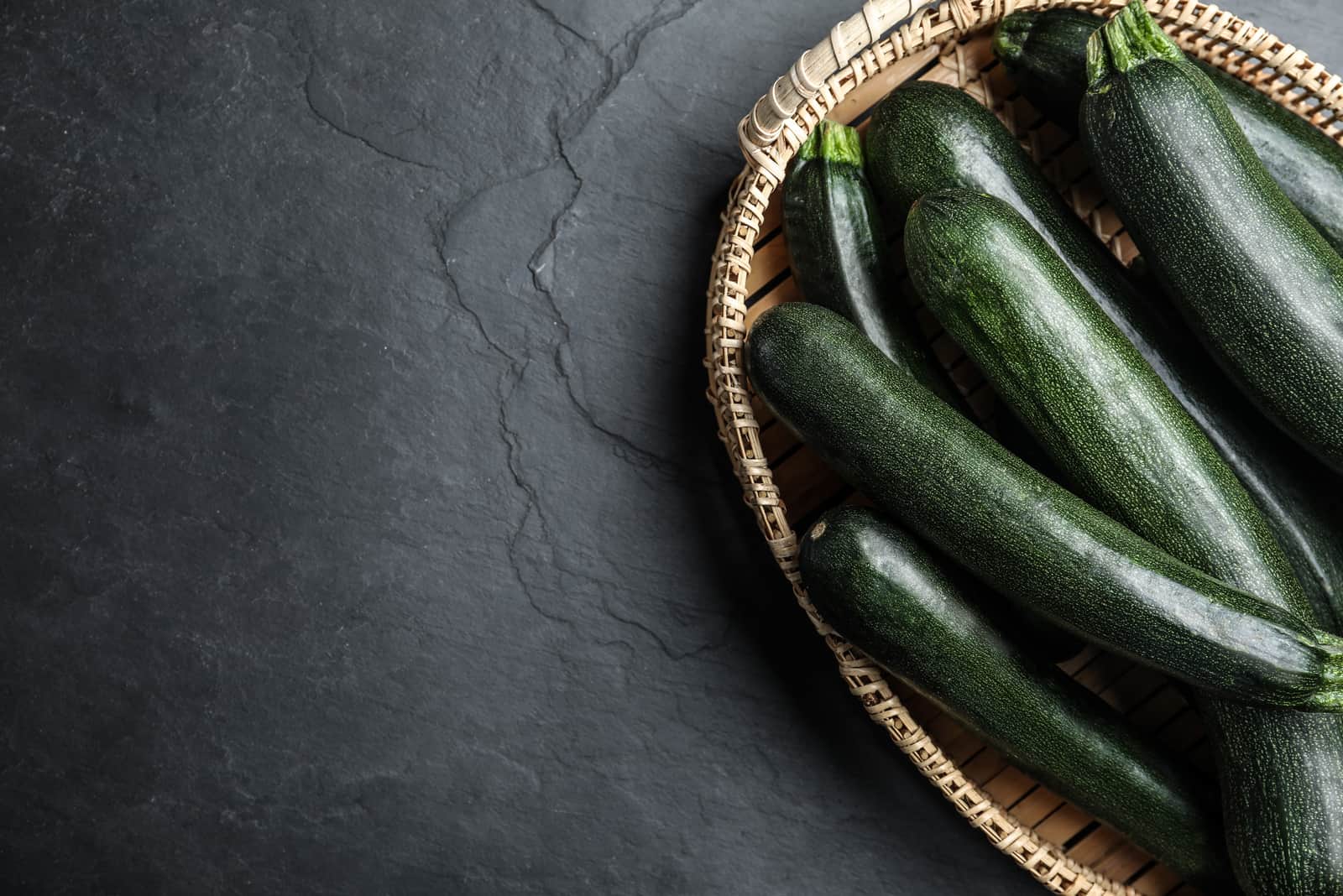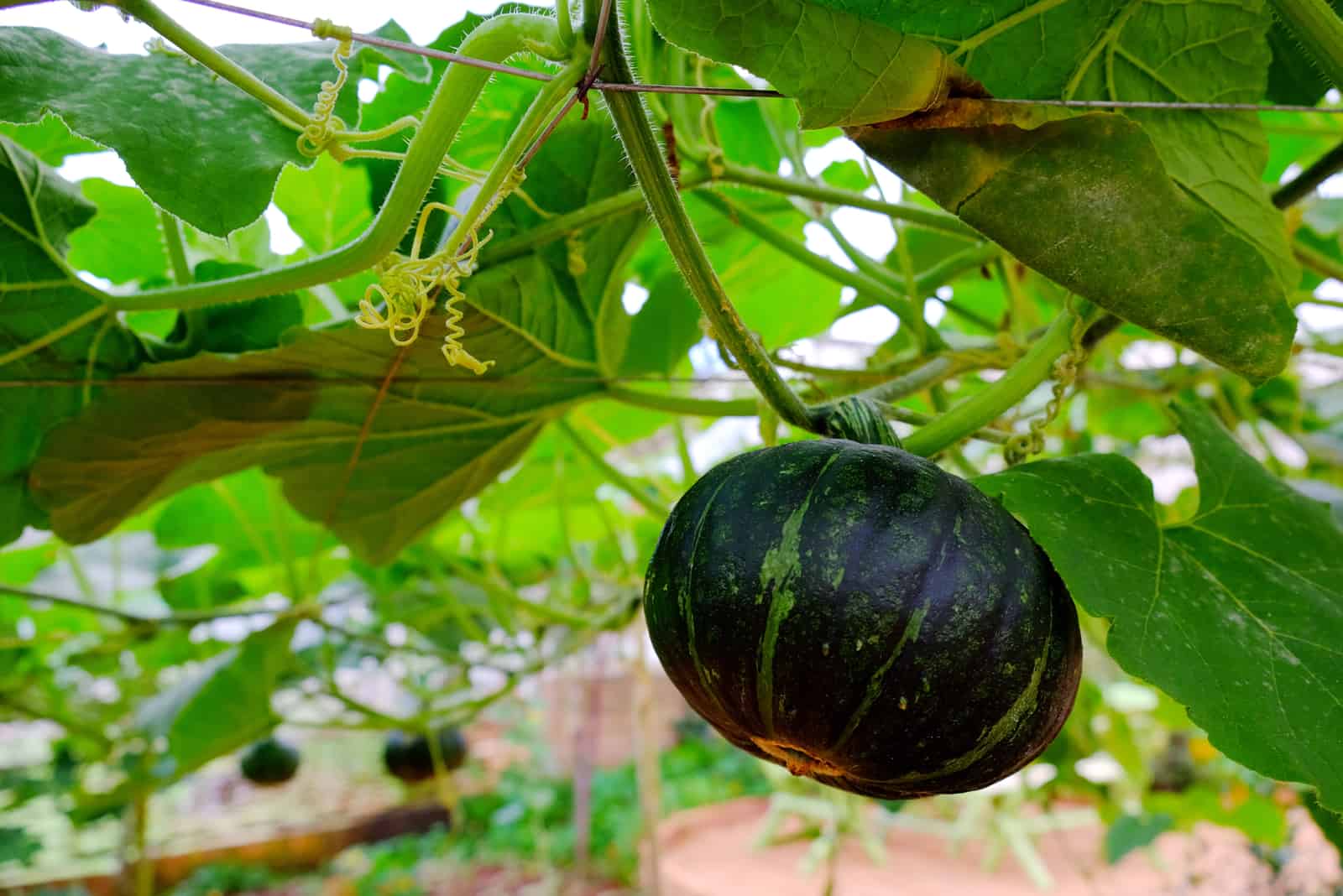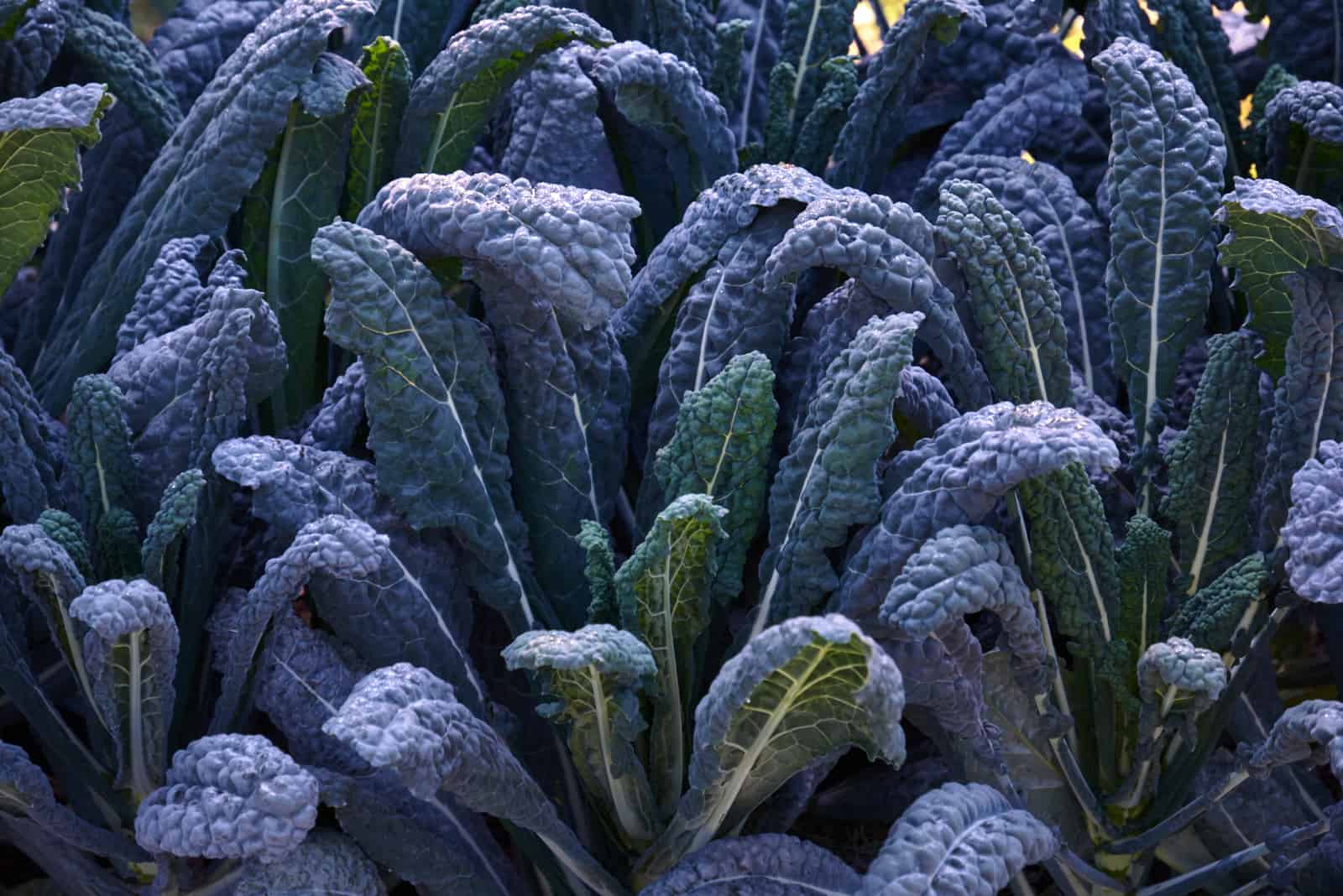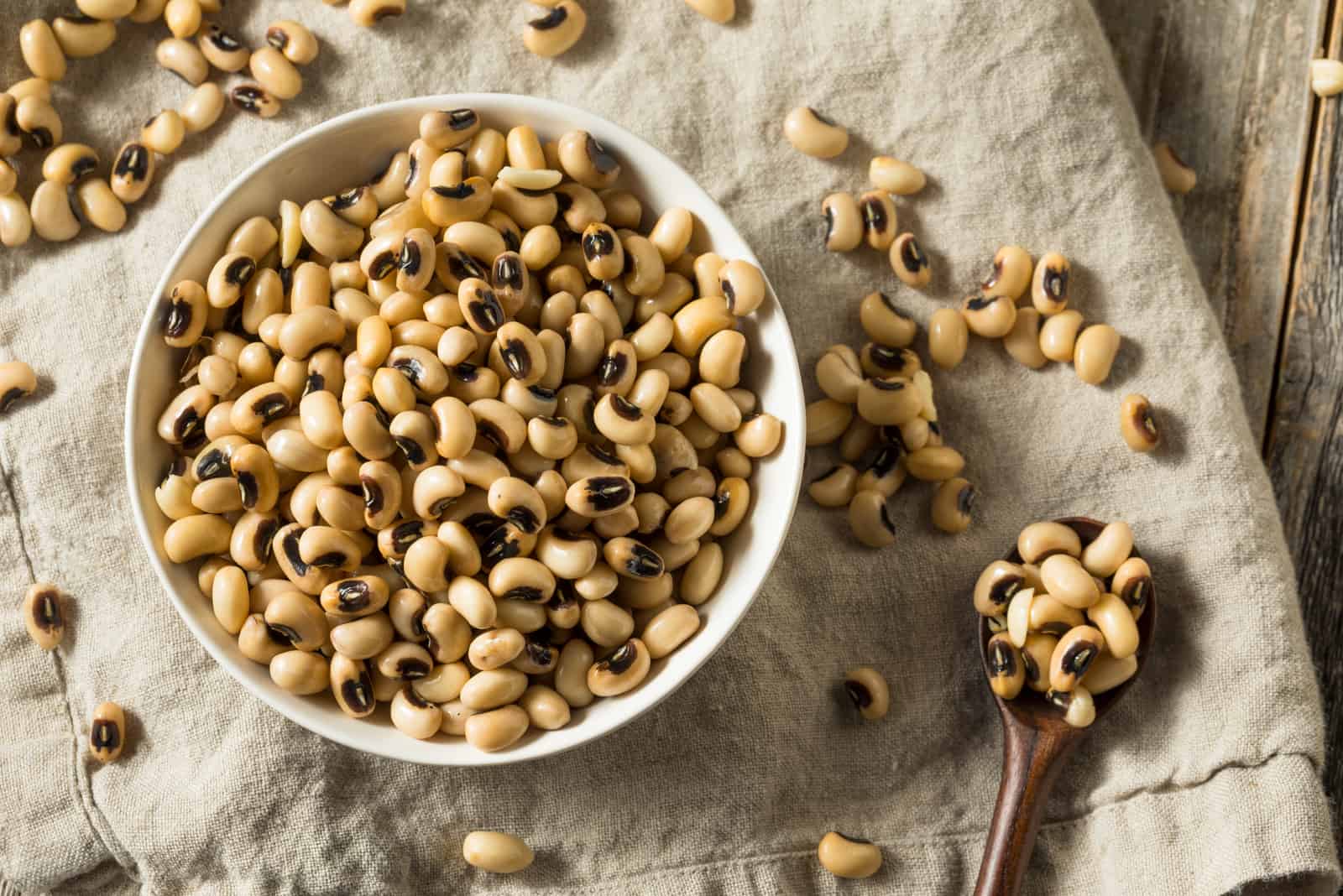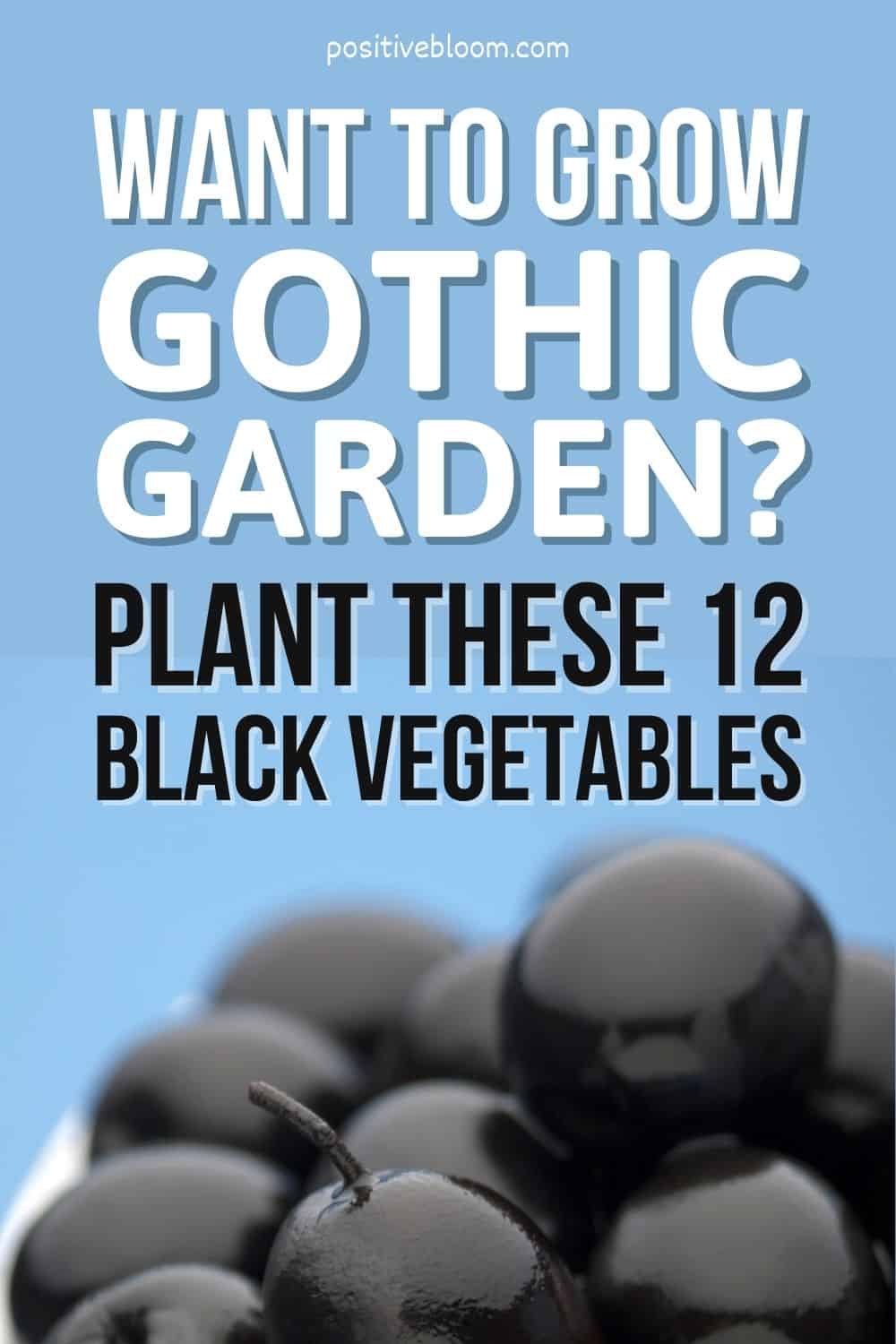We are used to seeing a lot of different colors in gardens, especially in flower gardens which elicit the impression of a rainbow exploding right there.
What is something that we don’t often see in gardens?
Probably the color not found in rainbows, and that color is black. Although it is quite popular nowadays, and it seems like you can buy anything in the black color,we don’t regularly bump into black gardens, which is strange because there are a lot of dark vegetables that can easily be grown.
I think the black color is highly extravagant and luxurious and a bit unusual for plants and flowers, which is why black roses are much more expensive than the regular ones.
Aside from looking so fascinating, black vegetables are filled with nutrients that are super beneficial for our health!
So, if you want to grow your very own Gothic garden or add a little bit of darkness to your colorful garden, continue reading the article to find what vegetables and black fruits to grow.
Why Are Black Vegetables Actually Black
Since rotten fruits are predominantly black, we naturally assume that black vegetables are not suitable for us – well, in this case, it’s the opposite.
Their nutritional value is actually quite remarkable.
These veggies have such dark colors because of two flavonoids, anthocyanins and anthoxanthins, which are highly concentrated in our black beauties.
These are also found in fruits like cranberries, blackberries, watermelon, apples, and grapes, but today, we will focus specifically on vegetables.
Not only do they give the veggies such a beautiful color, but they also protect them from harsh environmental conditions and act as antioxidants when you eat them.
Antioxidants are substances that can fight and neutralize free radicals, which cause heart disease and cancer. So we can certainly conclude that black color truly symbolizes power!
Types of Black Vegetables for Your Garden
Whether you want to have a Gothic garden or themed dishes for Halloween, or you just want to grow veggies that are highly beneficial to your health yet pretty easy to take care of, you have come to the right place!
Check out these 12 types of black vegetables and learn how to grow them!
1. Black Corn
When I think of corn, I immediately think of the color yellow (just like sunflowers), so naturally, I was skeptical that black corns were a real thing the first time I saw them—but they are, and they are very tasty.
Though it has a bit of mild and chewy taste compared to the sweet, yellow kernels, we can easily spot the main difference between this corn and the regular one, which is obviously the color!
At the beginning of its growth, the corn will have white kernels. But, as the plant matures, it produces long cobs with black kernels—the perfect contrast.
It is an heirloom variety, and you can either grow Maiz Morado black corns for their exquisite black kernels or choose Zea Mays “Maiz Morado” black corn that produces purple kernels – it is entirely up to you!
How to Grow Black Corn
• First, pay attention to the climate. Your corn is not frost-resistant, and you should wait for the frost to pass before planting.
• Sow the seeds only 1 inch deep and 3 inches apart.
• Do not plant them in one long row. Instead, you should plant them in 3 to 6 smaller rows to enable good pollination and full ears.
• They thrive in well-drained soil that gets plenty of water weekly.
• After the plant has grown about 4 inches, apply liquid fertilizer to promote healthy growth.
Black Corn Use
Black kernels are a perfect additive to salads, especially during the spooky holidays. They can be cooked, steamed, grilled, and boiled – depending on your dish. You can also use them to make aesthetically pleasing black cornbread or tortillas.
2. Black Beauty Tomatoes
The Black Beauty Tomato probably has the highest expression of the black pigment compared to other black veggies – the red color of the flesh is so intense and matches perfectly with the black skin.
Aside from looking absolutely stunning (which is how it got its name, Beauty), they are incredibly delicious! Folks often grow them because of their taste, not looks
It tastes slightly different from regular tomatoes; Black Beauty Tomato has a distinct smokey flavor. Some say it might resemble wine, but I honestly doubt that (maybe we should try to make wine out of these tomatoes?).
How To Grow Black Beauty Tomatoes
• Start cultivating your tomatoes indoors at least eight weeks before the last frost has occurred. This way, you will extend the growing season and have many more black beauties.
• Sow the tomato seeds 1/8 inch in depth and 24 inches apart from one another.
• Expect sprouts in two weeks. Keep your new tomatoes in full sun under temperatures ranging from 75 to 95 degrees Fahrenheit.
• They love slightly acidic soil, so make sure to test your soil’s pH and keep it below 7. Then, add mulch to loosen up the soil.
• Prune the leaves to prevent excessive leaf coverage, and constantly water your plant to prevent the fruits from cracking (tomatoes thrive in wet conditions).
Black Beauty Tomatoes Use
These beefsteak tomatoes are perfect for eating raw! Put it in a sandwich or salad, and you will get the perfect touch of smokey and juicy flavor. You can also use it in garnish or make soups and sauces from it.
3. Black Radishes
This black root vegetable is one of the most optimal choices when it comes to storing over winter—they won’t lose any flavor if stored properly.
Black radishes are fast-growing vegetables that produce fruits with darker colors on the outside and white flesh on the inside. These black and white fruits have a spicy flavor and are rich in vitamins, thus being the perfect choice for our overall well-being.
They are great for stomach disorders and can be used as antioxidants, cholesterol support, digestion, and detoxification support. In addition to that, they are also a natural remedy against stones in the kidney and gallbladder.
How To Grow Black Radish
• They don’t have soil preference. Hence, you can plant them in clay, loam, sand, and chalk. The choice is yours.
• They love moist soil, so make sure to water the soil before planting. During the growing season, water it once a week to keep the soil moist (more frequently if you grow them in sandy soil)
• Black Radish thrives in full to partial sun, and they need 6 to 8 hours of sunlight a day, so make sure to plant them in a sunny part of your garden.
• You can harvest a black radish five weeks after planting—don’t wait for too long, or your radishes will have a woody taste.
Black Radish Use
Black radishes can be eaten raw or cooked. You can either put them in salads, eat them as a snack, or turn them into noodles. Asides from that, you can make juices out of them or add them to smoothies if you don’t like the taste but still want those health benefits.
4. Black Cherry Tomatoes
Another tomato variety that can be used to darken your vegetable garden is the cherry tomato!
In this case, the tiny clusters of tomatoes look like overripe cherries, with relatively similar sweet and juicy flavors. However, at their full maturity, they have a somewhat smokey flavor.
These sweet, little black cherries are fast-growers and can be harvested two months after planting!
How To Grow Black Cherry Tomatoes
• You can choose to grow your plant indoors or outdoors, but it would be best to start them indoors and then transplant them outside after six weeks.
• When transplanting, ensure to put them in a place where they can get at least six hours of direct sunlight daily.
• They thrive in nutrient-rich soil and need nitrogen, potassium, and phosphorus to function optimally and produce delicious juicy fruits.
• Provide them with some support (stalking or caging) to keep them off the ground and ensure that the fruits are exposed to sunlight. Additionally, you can use this support to navigate your plant and make harvesting easier.
• During the growing season, you should water them each morning. However, if the temperatures are too high, water them twice a day to keep the soil moist.
Black Cherry Tomatoes Use
These black cherry tomatoes trend on TikTok every summer! People get so creative and use them to decorate their salads and meals, making several dishes and juices using the tomatoes—the famous cherry pasta, duh. Personally, I absolutely love tomato soup, and these black cherries add a perfect smokey flavor to it.
5. Black Nebula Carrots
These carrots have a black color with splashes of purple inside and show remarkable similarities to Nebula, which they’re named after.
Black Nebula Carrots are packed with even more antioxidants when compared to regular carrots and are filled with vitamin C and calcium.
Though they are root vegetables and might not contribute to your Gothic garden, you should plant them because they help prevent cardiovascular diseases and diabetes
Not only that, but they even have more flavor when compared to regular carrots—much sweeter, with a slightly spicy aftertaste.
How To Grow Black Nebula Carrots
• Prepare the soil and plant the seeds when the soil temperature has reached at least 45 degrees Fahrenheit because this vegetable is not frost-hardy and won’t grow in cold soil.
• Make sure to keep the soil moist until they germinate.
• Black Nebula Carrots prefer having well-drained, sandy soil. Hence, apply fertilizer with nitrogen when the plant has reached 3 inches in height. However, over-fertilizing can lead to chemical build-up, destroying your root vegetables.
• Water your Black Nebula carrots thoroughly at least once a week to avoid having misshapen carrots with a bitter taste.
Black Nebula Carrots Use
Black Nebula carrots can be eaten raw or cooked. They develop a sweet earthy flavor when roasted and can be boiled and used in stews or soups. Surely you can use these little space-like creatures as a garnish or use them to make bitter-sweet juices.
6. Black Beans
Black Beans in your area, or should I say dark-purple?
These beans have dark purple to black colors and are very high in protein content. You can easily find them in grocery stores if you cannot grow them in your own garden.
If you do plant them, make sure to provide them enough space since they are more bush beans than pole beans.
They are slightly sweet and soft when cooked, though they are not supposed to be eaten raw.
How To Grow Black Beans
• Get dried black beans and prepare your soil for planting. These black beans love well-drained soil, with optimum pH from 6 to 6.5.
• Place them somewhere sunny as they love getting direct sunlight throughout the day, and water your plants when the soil has dried out. However, it would help if you watered it frequently until the seeds sprout.
• You should also mulch your plant to keep the soil moist and prevent weed growth. Your beans don’t require much fertilizer; however, it would be best to add some before planting.
Black Beans Use
There are so many recipes where you can use black beans! The healthiest way to prepare your beans is actually to cook them with water. However, you can also mash them and use them as you would mashed potatoes or even make black bean brownies. You can add them to salads as a protein source or make a healthy dip out of them.
7. Black Eggplant
The black eggplant is my favorite vegetable!
It’s named the Black Syrian eggplant—this is because they originate from Syria; their seeds were saved and distributed before the Syrian civil conflict occurred.
These eggplants produce fruits with dark purple to black colors, though it is hard to distinguish between them, so we say black.
They are a great source of minerals and vitamins that help digestion and increase brain function.
Their flavor is a bit sweet with a bitter aftertaste.
How To Grow Black Eggplant
• You should grow your black eggplant indoors because they have relatively slow growth and a long season. Ensure that the frost has passed before transplanting your black eggplant into the garden.
• Plant them in an area with well-draining soil that is weed-free.
• They thrive in warm weather and should receive direct sunlight throughout the day.
• Water them 1 inch once a week, and your black eggplant will grow happy and healthy.
Black Eggplant Use
Black Eggplants are a popular choice in cuisine. They can be grilled, cooked, stuffed, filled, served as soups, stews, or used in curries! Personally, I prefer to eat my eggplant without removing the skin because the skin is the healthiest part of the plant (and it’s delicious).
8. Black Hungarian Peppers
Black Hungarian Peppers are one of the spiciest vegetables on the list mainly because they taste similar to jalapenos.
This plant produces beautiful purple flowers, which turn into black peppers after 70 to 90 days. So if you want to have completely black vegetables in the garden, you have to be patient with these peppers; they’ll get there!
How To Grow Black Hungarian Peppers
• To extend the growing season and yield larger crops, start growing your plant indoors at least eight weeks before the last frost.
• Transplant the plant a few weeks after the last frost, when the soil has relatively warmed up. They prefer having well-drained soil and direct sunlight throughout the day—keep that in mind when transplanting.
• They require watering once a week, and you can also add compost or fertilizers to get your plant to grow numerous peppers.
• If you leave peppers unharvested for a while, they will sweeten up and lose the spiciness.
Black Hungarian Peppers Use
They make the perfect combination with black bean salsa! In addition, they are used as a touch of spiciness in salads and meals. You can also use them to make sauces and jams, or pickle them and eat them during winter to keep you warmed up!
9. Black Salsify
Black Salsify is a root vegetable that is rarely mentioned. However, not only is the root edible but the flowers and leaves are super delicious as well!
What makes this plant so special is its fiber content, which contributes marvelously to our overall well-being. Firstly, it promotes frequent bowel movements. It can also stimulate hair growth, regulate blood pressure levels, slow down skin aging, increase circulation and metabolism, and fight cancer cells.
It is also referred to as a black oyster plant due to its pleasant and mild flavor reminiscent of oysters.
How To Grow Black Salsify
• Plant the seeds at the end of the winter season, and after the soil has warmed up a bit, sow them in rows about a half-inch deep and 12 inches separated. They prefer well-drained soil.
• They don’t require much—plant them under full sun and water regularly if the temperatures are higher.
• When the winter season starts approaching again, spread the mulch on the top to keep them warm and make pulling them easier afterward.
• You can harvest them by simply pulling the roots out anytime from October to April.
Black Salsify Use
You can think of Black Salsify as a healthier version of potatoes; thus, cook it accordingly. Peel the skin off and do whatever you want with the Black Salsify—either boil it, fry it, make mashed salsify, or add them to soups and stews!
Note that it is not quite cheap in grocery stores, so it’s better to grow your own Black Salsify.
Here is how to cook black salsfiy:
10. Black Beauty Zucchini
Black Beauty Zucchini is my second favorite black vegetable; I even grow them in my garden!
It is an heirloom squash that can grow almost 10 inches long—so you will have to provide space for its juicy fruits.
This type of zucchini has dark green to black exterior colors. However, it has a white to creamy white color on the inside.
Some people say that it has no taste at all, but for me, it has a soft flavor, which makes it perfect for mixing with different spices and seasonings.
You should also know that Zucchini is a type of vegetable that loves growing in greenhouses!
How To Grow Black Beauty Zucchini
• Black Beauty Zucchini can be grown directly in the soil, or you can start cultivating this plant indoors in April and then transplant it around May/June.
• Sow the seeds 1 inch deep in rows that are at least 18 inches apart, and the plants should be about 36 inches apart from one another.
• These types of plants absolutely love well-drained and nutrient-rich soil. Hence, you must add fertilizer or compost before planting. Also, keep in mind that the pH of the soil should be within 6.0 to 6.8.
• Plant them in a place where they can get full sun throughout the day, and water them once a week to keep the soil moist. Avoid watering the entire plant because wet leaves might attract mildew.
• Harvest Black Beauty zucchinis once you notice they have reached full maturity—they grow big and have tough skin. This way, you will encourage your plant to produce more fruits.
Black Beauty Zucchini Use
I personally don’t eat zucchini raw. However, you can eat it raw if you want. There are several zucchini recipes: you can either add it to your salad or spaghetti, make butter out of it, grill it or bake it in the oven—the options are countless!
11. Thai Kang Kob Pumpkin
These Thai Kang Kob pumpkins are the most Gothic-looking out of all black vegetables! I really can’t understand why regular pumpkin is mostly used every Halloween when this black beauty is more suitable for it.
The Thai Kang Kob pumpkin has a deep teal black color on the outside, making it easy to combine with plants that produce white fruits—the perfect black and white combination!
On the inside, it has flesh that grows to have an intense orange, and its flavor is usually sweet once cooked.
This squash is resistant to several pests and insects, so you won’t have to worry about them destroying your plant. Though I don’t like pumpkins, I might plant this the next season and brag about my aesthetic garden!
How To Grow Thai Kang Kob Pumpkin
• You can begin cultivating your Thai Kang Kob Pumpkin indoors before the last frost or plant it directly in the soil after it has warmed up.
• If you choose to start your plant indoors, don’t let it become root-bound, and strive not to disturb the roots when transplanting.
• Plant your Thai Kang Kob pumpkin in a place where they can get full sun all day, and water them once a week or more frequently when the temperature is higher.
• You can harvest them in a few months after planting because they need about 120 days to reach full maturity.
Thai Kang Kob Pumpkin Use
Because of its sweet and fruity flavor, Thai Kang Kob pumpkin is usually added to curries and soups. However, you can also grill or boil it—just add some sugar, and you ultimately get a healthy and delicious treat! My mom also adds pumpkin to bread (which I don’t eat, of course), and she also makes juices and jams.
12. Black Magic Kale
With its palm-tree-like and crinkly leaves with beautiful dark-blue almost black colors, it is truly one of the prettiest plants for the garden.
Black Magic kale is rich in vitamin C and calcium and low in calories—the perfect choice for the people on a diet. Aside from this, Black Magic kale can help with arthritis and depression, as well as cancer prevention.
It can be cooked to soften the chewy texture, and it has a slightly bitter-sweet taste.
How To Grow Black Magic Kale
• Prepare the soil before planting by adding well-composted manure as Black Magic Kale thrives in nutrient-rich soil. Bear in mind that they prefer well-drained soil.
• They can be grown in full sun and partial shade.
• Black Magic Kale is a fast-grower that thrives in moist soil. Therefore you should water it about 1.5 inches once a week.
• You should also add mulch to prevent weed growth and retain soil moisture.
• When harvesting, start with the lower leaves that have reached full maturity.
Black Magic Kale Use
Its young leaves can be eaten raw, so they are often used in salads; however, mature leaves should be cooked. You can sauté your Black Magic kale, steam, fry, stew, or even use it to make juice. They mix great with garlic, ginger, and soy sauce. You can use Black Magic kale with several recipes to make delicious and healthy meals.
13. Black-Eyed Peas
I gotta feeling oooh, that your garden is gonna be a good one!
Black-eyed peas are probably the most popular among all other plant varieties, mainly because there is a famous pop group named The Black Eyed Peas.
We are going to focus strictly on vegetables here.
Black-eyed peas are rich in proteins and nutrients, including zinc, potassium, and iron. They also have a lot of fibers that are good for your bones and muscles.
They can improve your metabolism and digestion, which is why they are often added to diet plants; besides this, eating Black-eyed peas can enhance your skin, lower blood pressure and cholesterol, as well as decrease the risk of pancreatic cancer.
How To Grow Black-Eyed Peas
• Sow your Black-eyed peas directly into the ground after the last frost, when the soil has warmed up to at least 60 degrees Fahrenheit. Sow the seeds one inch deep and keep the plants 2 inches apart in a row, and keep the rows about 3 inches from one another.
• Your plant will require partial to full sun exposure to produce those delicious and nutritious peas.
• Provide your plant support as soon as possible to keep them from spreading on the ground.
• Water frequently to retain the soil moisture since they can not tolerate drought and avoid fertilizing.
Black-Eyed Peas Use
You can simply boil them to get the full taste of the earthy flavor, or you can use them to make stews, soups, salads, or even mash them into dips. I personally love adding them to my tuna salad as an additional protein source, and of course, due to their delicious flavor!
Final Thoughts
So, are you ready to grow your own Gothic garden now?
These spooky, black vegetables should be grown primarily because of the numerous benefits they bring to our health, and then you should consider growing them to decorate your garden.
If you are more into having a colorful garden, choose at least one of the 12 black vegetables from our list and combine it with some other plant to emphasize the color of its fruit.
When choosing, consider the soil type, light and water requirements, and whether you should fertilize the plant or not.
When you decide those, take good care of your plant and enjoy its delicious fruits!
Like this post? Share or pin it for later!

